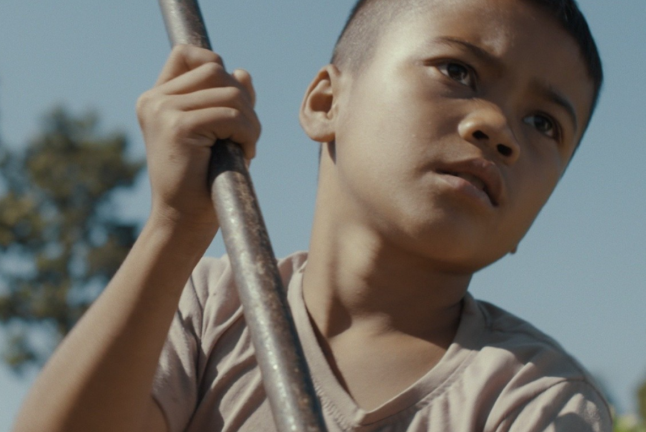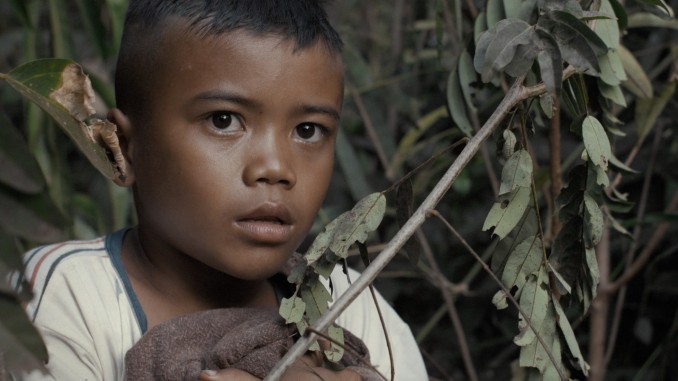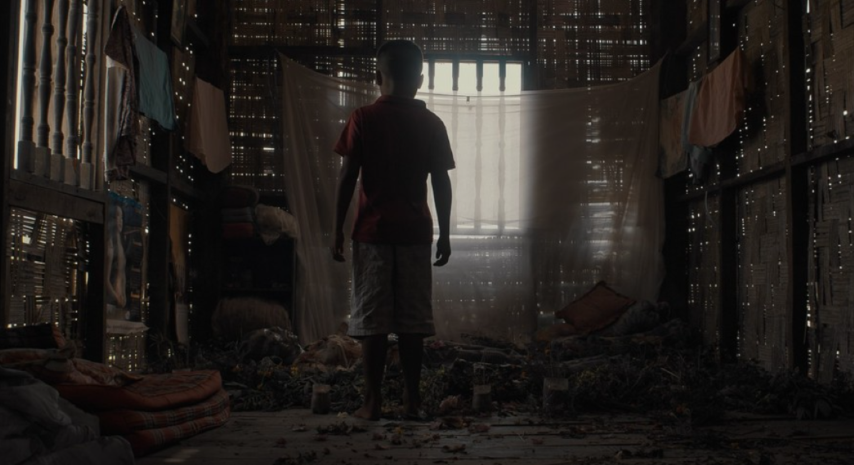
Laotian film features on Netflix
“Laotian cinema does not really exist.” In the mid-’90s, when Som Ock Southiponh wrote this, he was the only Laotian director not working for the government. Only 12 Lao films had ever been made. Only three were still around. In the 30 years since, little has changed for Laos. When Mattie Do, who was born in L.A. and has lived/worked in the Laos capital of Vientiane since 2010, made her second feature, Dearest Sister, it was Laos’ first Oscar submission.
Her first feature, Chanthaly, was Laos’ first horror, and its first film ever directed by a woman. As the pop cultural world at large continues snapping up Asian cinema—riding a Korean Wave that followed a J-horror renaissance—Do’s third film in her unlikely trilogy sets the stage for something extraordinary: One filmmaker nearly single-handedly defining a country’s cinematic style. The Long Walk is Do’s most confident film yet, encapsulating her ghostly, personal, culturally specific vision for what Laotian horror could be.
Do takes the job personally (she shot Chanthaly entirely in her home) and what she’s bringing to the table is unlike anything Laos has ever seen. Previously, Lao films were almost entirely propaganda, “tourist political” pieces or—if you count the first film shot in Laos—’20s docudrama spectacles that inspired King Kong. Chanthaly was the first time Laotian moviegoers saw a horror film in their own language. That meant “making a movie that would be scary for a Lao audience, understanding that a Lao audience has never seen a scary Lao movie,” Do explained in 2013. Horror is way more universal than comedy…but finding out how much genre grammar translated was a big question.

So with barely any money, no filmmaking infrastructure, and a Department of Cinema ready to censor anything out of line, Do and her team focused on visual storytelling that would resonate with local superstition—but with her personality behind it all. Do’s movies are ballet-driven (an ex-instructor, she’s drawn from Giselle and La Bayadère while emphasizing the movements of her inexperienced stars) and genre-hopping. They’re a little wild, embodying some of the energy Do displayed in her cutely funny, semi-unhinged IndieGoGo fundraising videos. They’re interpersonally realistic, with subtlety in expression and unspoken thoughts, socially critical and fantastically grounded. They’re full of spirits, because so is Laos.
“We’re still very traditional in a lot of ways,” Do told Senses of Cinema. “We still believe in possession, we still believe in hauntings, we still believe in rebirth and reincarnation. If I was to say that I was being haunted, no one would say, ‘No, you’re not.’ They would ask for more details. They would believe me right away.” Do held Baci ceremonies before shooting, just like Southiponh did shooting his short docs in 1993. But her movies are anthropological in a less direct way. In The Long Walk’s near-future, cops ask a local known for his sensitivity for help locating a body. These kinds of mundane integrations of the supernatural with natural social realism (interracial marriage, class struggle/jealousy, patriarchal suppression) paint daily Laos life in lush detail. When she was shopping a script around Cannes, Do was asked “Does it have to have ghosts? You obviously have an underlying social drama in here.” She insisted that yes, obviously it had to have ghosts. “I mean, we are Lao. It would not be Lao without those ghosts.”
Chanthaly’s main character can talk with her dead mother; Dearest Sister’s interacts with spirits bearing winning lottery numbers; The Long Walk’s finds spectral companionship and a time-hopping way back to the moment of his mother’s death. All feel perfectly honest, yet dangerous. Polygon’s Brad Sanders wrote that “Do makes films where the veil between the worlds of the living and the dead is permeable, but the people who pass through it often pay unimaginable costs for the privilege.” Her ghosts and those that communicate with them carry a degree of perilous presumption: The spirits are clearly visible and tangible, yet unknowable—though it’s not like that stops anyone from assuring themselves that they’re the ones who’ve sussed it all out. The Long Walk in particular explores this by toeing the line between euthanasia and murder, a final and terrible presumption Do was likely wrestling with when putting down her dog during the writing process.
Drawing thematic or even literal inspiration from personal details—like the death of Do’s mother, which hangs over, and is sometimes literally replicated in, the director’s films—Do brings her relatable trauma regarding loss and alienation to the fore. But she also had a broader quest to “faithfully represent Lao people and push against the formal stiltedness of most Lao media output,” to create a Lao cinematic style that raises middle fingers at orientalist expectations of poverty porn or stoic mysticism. Warm tones color emerald jungles and bright clothes. A freewheeling camera observes candles, pyres and knives. Bugs whine like electrical equipment. Though obviously personal, Do’s style manifests in tone, subject matter, aesthetic and production logistics.

The Long Walk was written, like all her films, by her husband Christopher Larsen (who wears as many hats on the productions as Do) and reflects the tightknit Laotian film industry, with recurring cast members like Yannawoutthi Chanthalungsy and Vilouna Phetmany. But it’s not just the leads: Producers/Lao Art Media admins Douangmany Soliphanh and Anousone Sirisackda, who helped Do with Chanthaly, make small cameos. The pair represent the tiny, collaborative community’s past, helping its present; Sirisackda’s 2008 film Good Morning, Luang Prabang became Laos’ first privately funded feature since the country adopted communism.
This small group, with Do at the helm, is forging a national style—and setting a standard for fellow filmmakers in Laos looking for success. Not many share the experience of shooting in a country with little by way of equipment or trained personnel. Fewer still know the ins and outs of navigating a Cinema Department that’d probably prefer Do tackled entirely different subject matter. Good Morning, Luang Prabang’s filmmakers chose “a soft storyline” so as not to ruffle any censorship feathers and a government official was still on set every day of production. The Voice of Guns from the Plain of Jars, a 1983 Laotian film, never got to see the light of day. But film production has ramped up since then. Is this strict censorship easing up as Laos sees potential in the film industry? Or is Do just really good at figuring out what will fly? Either way, Do’s got experience working through scripts with the Ministry of Information and Culture, finding ways to make her oddball art with government approval.
That savvy doesn’t necessarily mean her movies are domestic hits. In Do’s experience, Lao audiences, like popular audiences everywhere, want popcorn entertainment. Marvel movies and soap operas still win out the day. But her films are unique in that they’re not Thai imports, massive blockbusters or dull melodramas—they’re homegrown originals, attempting to tell honest and rich stories of the country and those that live there. It’s a new style, and one that belongs entirely to Laos. At the very least, Do’s come a long way from paying a worker at Vientiane’s one theater “to start and stop [a burned Chanthaly Blu-ray] five times a day for two weeks.”
When Dearest Sister was submitted for Oscar consideration, Do said that “because there aren’t any locked expectations about what a Lao film should be, I have the freedom to create something completely unique that hasn’t existed before.” Laotian cinema didn’t really exist in the ‘90s. But it does now, and thanks to Chanthaly, Dearest Sister and The Long Walk, it looks a lot like Do wants it to: Bloody, strange, supernaturally liminal and nuanced. It’s a cinema of personal grief and universal drama. It’s a cinema assessing a stagnant future while carrying all the traditions of the past. In The Long Walk’s vision of the future, there may be new ways to buy things and ways for the rich to go from A to B more quickly, but there are still all the needs that define us. Hunger still exists. Greed still exists. Bills still exist. And so, too, do ghosts.
Jacob Oller is Movies Editor at Paste Magazine. You can follow him on Twitter at @jacoboller.
Comments RSS Feed